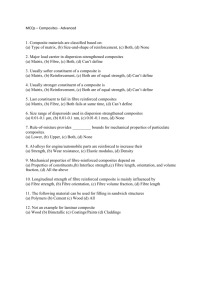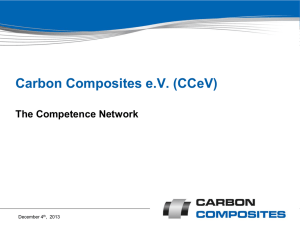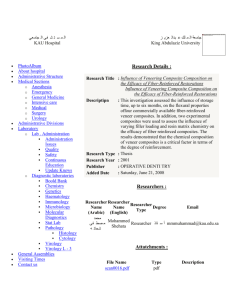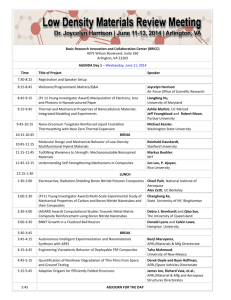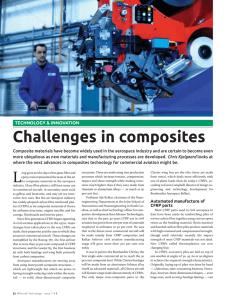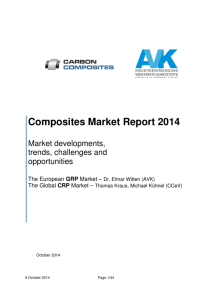Abstract summaries
advertisement
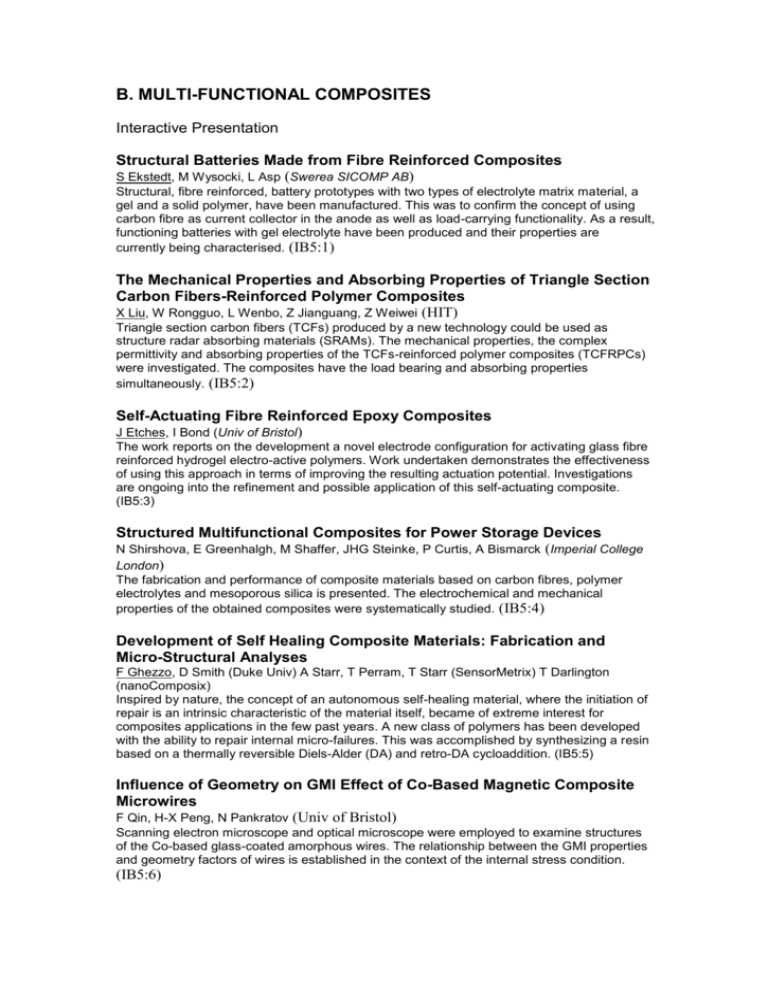
B. MULTI-FUNCTIONAL COMPOSITES Interactive Presentation Structural Batteries Made from Fibre Reinforced Composites S Ekstedt, M Wysocki, L Asp (Swerea SICOMP AB) Structural, fibre reinforced, battery prototypes with two types of electrolyte matrix material, a gel and a solid polymer, have been manufactured. This was to confirm the concept of using carbon fibre as current collector in the anode as well as load-carrying functionality. As a result, functioning batteries with gel electrolyte have been produced and their properties are currently being characterised. (IB5:1) The Mechanical Properties and Absorbing Properties of Triangle Section Carbon Fibers-Reinforced Polymer Composites X Liu, W Rongguo, L Wenbo, Z Jianguang, Z Weiwei (HIT) Triangle section carbon fibers (TCFs) produced by a new technology could be used as structure radar absorbing materials (SRAMs). The mechanical properties, the complex permittivity and absorbing properties of the TCFs-reinforced polymer composites (TCFRPCs) were investigated. The composites have the load bearing and absorbing properties simultaneously. (IB5:2) Self-Actuating Fibre Reinforced Epoxy Composites J Etches, I Bond (Univ of Bristol) The work reports on the development a novel electrode configuration for activating glass fibre reinforced hydrogel electro-active polymers. Work undertaken demonstrates the effectiveness of using this approach in terms of improving the resulting actuation potential. Investigations are ongoing into the refinement and possible application of this self-actuating composite. (IB5:3) Structured Multifunctional Composites for Power Storage Devices N Shirshova, E Greenhalgh, M Shaffer, JHG Steinke, P Curtis, A Bismarck (Imperial College London) The fabrication and performance of composite materials based on carbon fibres, polymer electrolytes and mesoporous silica is presented. The electrochemical and mechanical properties of the obtained composites were systematically studied. (IB5:4) Development of Self Healing Composite Materials: Fabrication and Micro-Structural Analyses F Ghezzo, D Smith (Duke Univ) A Starr, T Perram, T Starr (SensorMetrix) T Darlington (nanoComposix) Inspired by nature, the concept of an autonomous self-healing material, where the initiation of repair is an intrinsic characteristic of the material itself, became of extreme interest for composites applications in the few past years. A new class of polymers has been developed with the ability to repair internal micro-failures. This was accomplished by synthesizing a resin based on a thermally reversible Diels-Alder (DA) and retro-DA cycloaddition. (IB5:5) Influence of Geometry on GMI Effect of Co-Based Magnetic Composite Microwires F Qin, H-X Peng, N Pankratov (Univ of Bristol) Scanning electron microscope and optical microscope were employed to examine structures of the Co-based glass-coated amorphous wires. The relationship between the GMI properties and geometry factors of wires is established in the context of the internal stress condition. (IB5:6) Self-Sensing of Delamination in Quasi-Isotropic CFRP Laminate using the Piezoresistivity M Ueda (Nihon Univ), A Todoroki (Tokyo Institute of Technology) Self-sensing technique for damage in CFRP laminate was proposed. CFRP cloth is often stacked onto a CFRP laminate as a protective layer to prevent surface damage and it was thus used as a strain sensor utilizing its piezoresistivity. Delamination was identified from the electric potential change of the CFRP cloth due to surface strain variation. (IB5:7) Thermally Activated Multifunctional Composites C Galiotis, G Trakakis, J Parthenios, PPappas, D Bollas (ICEHT/FORTH) NEEDS 50 WORD ABSTRACT (IB5:8)
